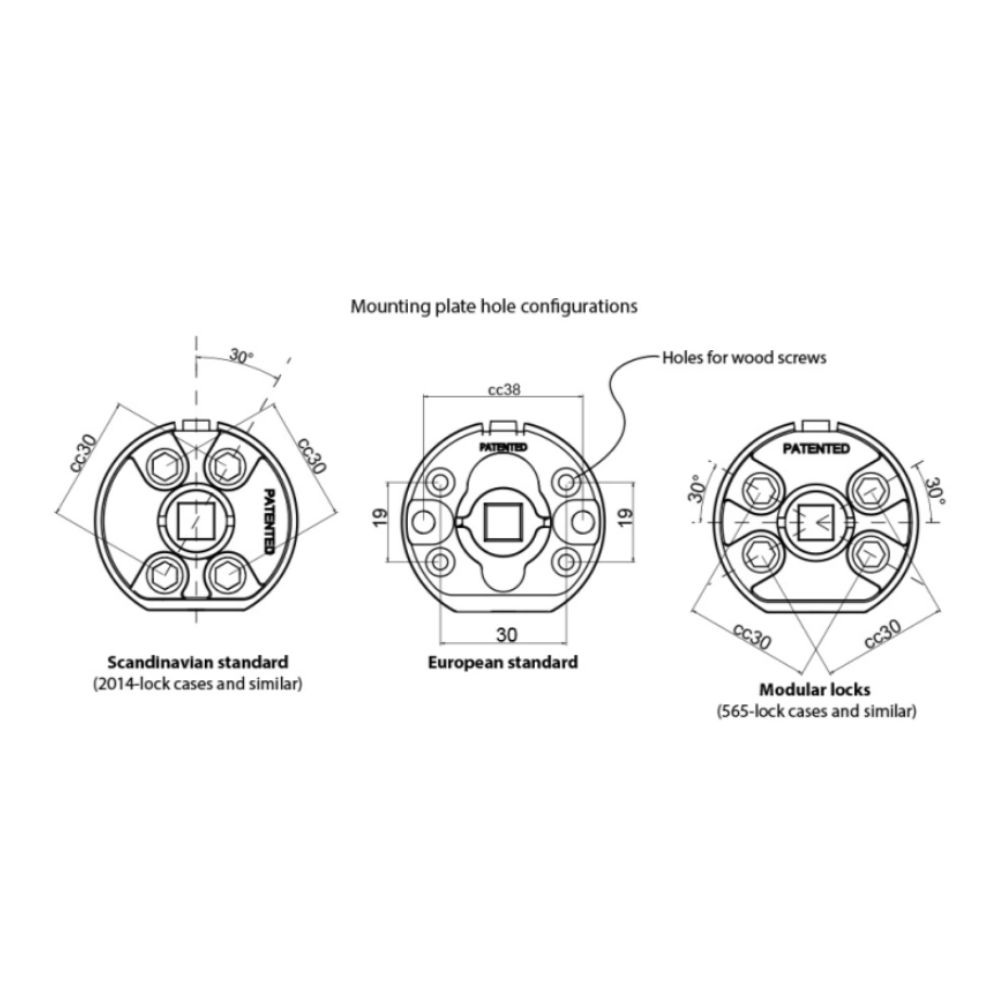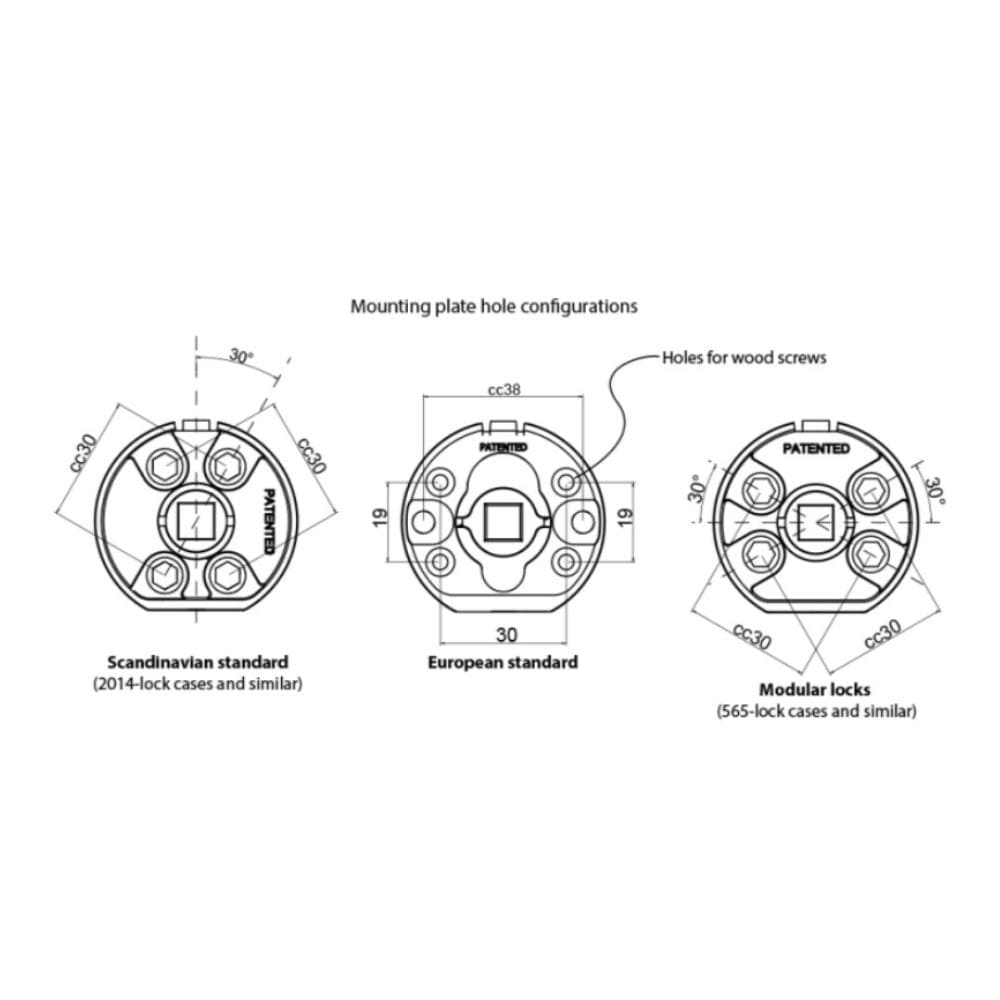This instruction is only for our door handles with mounting plates, such as Helix 200, Helix 200 Stripe, Helix 200 Plain, Pipe, Nord, Tavira, and Sintra.
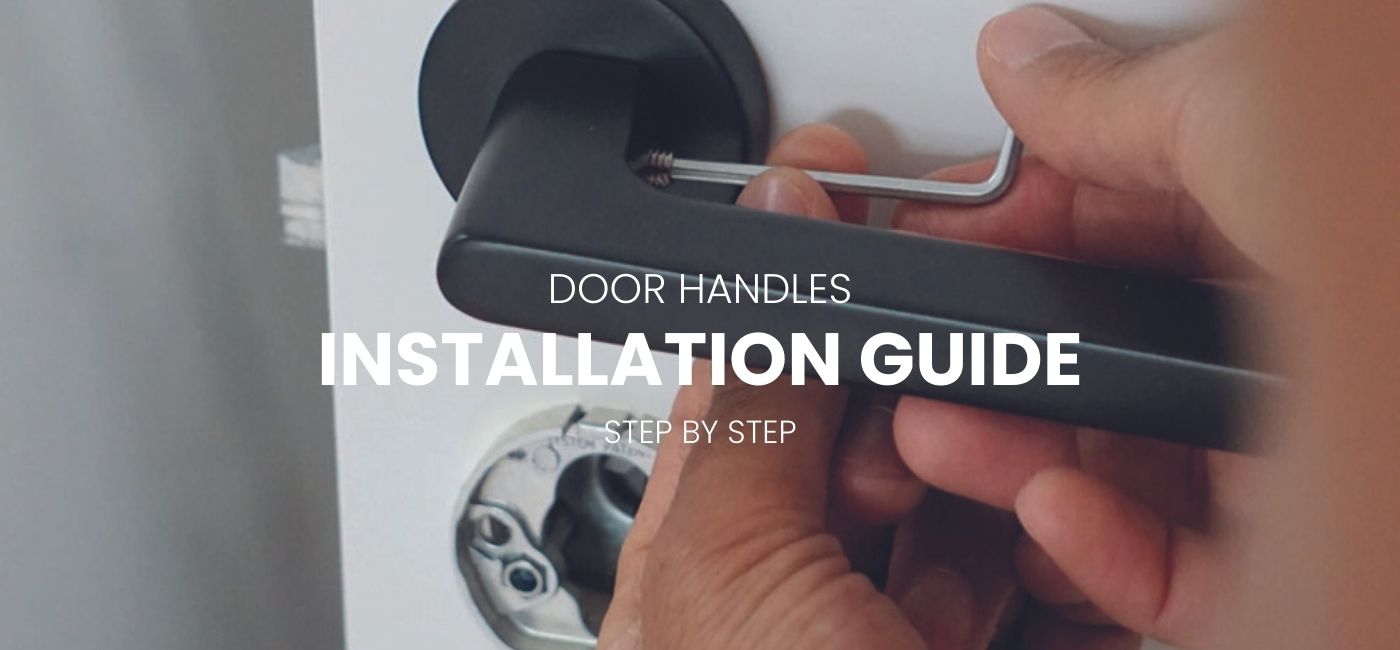
1. Scandinavian or European standard for your door handle?
Before placing your order, it's a good idea to double-check whether your doors follow the Scandinavian or European standard. So, how do you know which one to choose? And what are the differences? - Start by looking at your existing mounting plates. If you have never had door handles with mounting plates before or if you have a completely new door, check how the screw holes of the lock case are positioned.
A door with Scandinavian standard fits model 2014- and lock cases with the same hole configuration. Usually, the model number is indicated on the front of the lock case (the part visible on the edge of the door). The mounting plate for Scandinavian standard has four screw holes of the same size, arranged in a vertical, narrow cross pattern. The C/C measurement for the diagonally placed screw holes is 30mm. C/C measurement refers to the distance between the centers of the screw holes, and these measurements are always given in millimeters.
If you have a door with European standard, the screw holes are parallel to the square hole in the center of the mounting plate or lock case. The C/C measurement is 38mm, which means the distance between the centers of the screw holes, and these measurements are always given in millimeters. Our mounting plate also has four slightly smaller holes to allow for installation in wood.
- In short, it's the placement of the screw holes that distinguishes European from Scandinavian standards.
Therefore, don’t forget to check the placement of the screw holes on your door to ensure you receive door handles that fit. Scandinavian countries typically use the Scandinavian standard, while other European countries use the European standard for their doors, but there can be exceptions. We recommend checking which standard you need before placing your order.
A door with Scandinavian standard fits model 2014- and lock cases with the same hole configuration. Usually, the model number is indicated on the front of the lock case (the part visible on the edge of the door). The mounting plate for Scandinavian standard has four screw holes of the same size, arranged in a vertical, narrow cross pattern. The C/C measurement for the diagonally placed screw holes is 30mm. C/C measurement refers to the distance between the centers of the screw holes, and these measurements are always given in millimeters.
If you have a door with European standard, the screw holes are parallel to the square hole in the center of the mounting plate or lock case. The C/C measurement is 38mm, which means the distance between the centers of the screw holes, and these measurements are always given in millimeters. Our mounting plate also has four slightly smaller holes to allow for installation in wood.
- In short, it's the placement of the screw holes that distinguishes European from Scandinavian standards.
Therefore, don’t forget to check the placement of the screw holes on your door to ensure you receive door handles that fit. Scandinavian countries typically use the Scandinavian standard, while other European countries use the European standard for their doors, but there can be exceptions. We recommend checking which standard you need before placing your order.
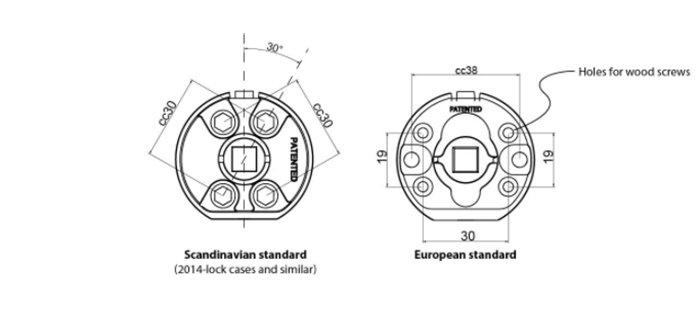
2. Find New Door Handles - The Most Exciting Step!
Once you have determined the standard of your doors, it’s time for the most exciting part: finding the right door handle for your home. Start by clicking on the menu at the top of the page and selecting interior door handles. Here you will find a wide range of door handles from Beslag Design. Don’t forget that you can filter by style, product type, and/or color. If you're unsure about the combination between your door and your new door handle, no worries—we have visual guides showing different combinations. So, don’t hesitate to explore the various door handles to find the one that suits your home and style. You can also find us on Instagram and Pinterest for more inspiration.
3. Remove Your Old Door Handles
Start by removing your old door handles. You will usually need a screwdriver and an Allen wrench for this.
4. Install Your New Door Handle
Begin by removing the old handles and cleaning the area where they were mounted with a cloth. Use a screwdriver with the correct head when installing the new handles. The screws included with the handles are M4 screws with a combination drive, which means both Phillips and flathead screwdrivers can be used. We recommend using a screwdriver to avoid damaging the threads.
4.1 - Once your old handles are removed, start by centering the provided square spindle, also known as the "rod," in the lock.
4.1 - Once your old handles are removed, start by centering the provided square spindle, also known as the "rod," in the lock.

4.2 - Then place the mounting plates on the square spindle, making sure that the flat side of the mounting plates is facing down towards the floor. The mounting plates should be snug against the door. Next, screw the plates into place using the provided screws and nuts. Tighten the screws gradually to avoid putting the handle under undue stress. If you tighten one screw completely before the other, it may cause the handle to bind.

4.3 - When the mounting plates are screwed in, remove the square spindle and use it as a tool to loosen and remove the guide plates in the center of the mounting plates. Sort these as metal for recycling. The guide plates are intended to facilitate the installation of the mounting plates but should not remain in place when using the door handle.

4.4 - Place the square spindle so that the milled slot faces away from the door leaf's nearest edge. This is to ensure that the stop screw in the door handle can be fixed into the square spindle. Center the square spindle so that it protrudes equally on both sides of the door. Use a flathead screwdriver to adjust the spindle's placement if necessary.
4.5 - Then press the door handles into place so that they click into the notch on the top side of the mounting plates. The door handle's rose should be flush against the door leaf.
4.5 - Then press the door handles into place so that they click into the notch on the top side of the mounting plates. The door handle's rose should be flush against the door leaf.

4.6 - Now it's time to screw in the door handles. Use an Allen wrench to tighten the stop screws and finish by securing them. The image below shows the tightening of the stop screw that secures the handle to the square spindle. – Don’t forget the screw on the underside of the door handle; this stop screw secures the door handle to the mounting plate.
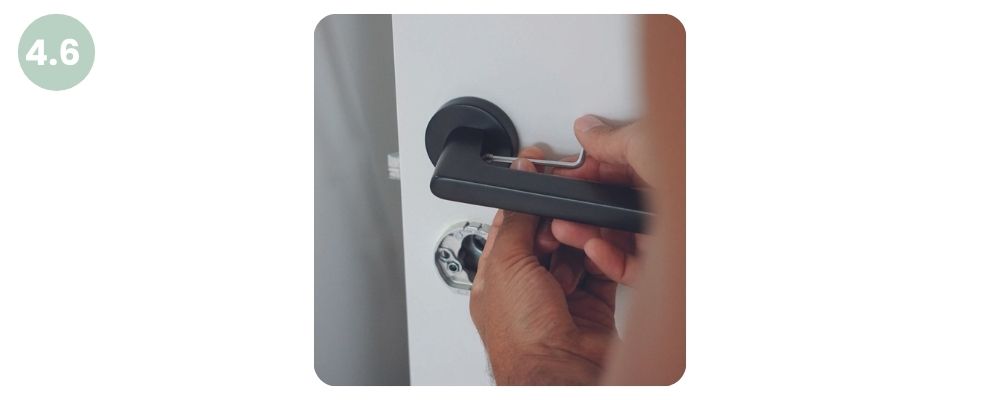


 Retro
Retro  Country
Country Modern
Modern









